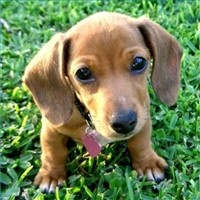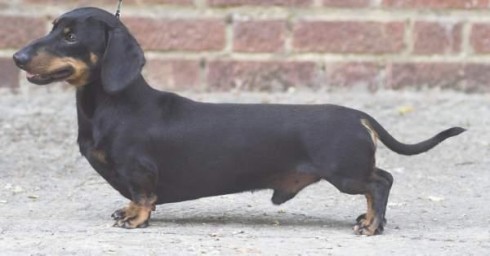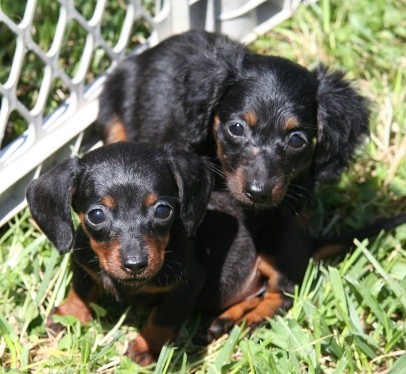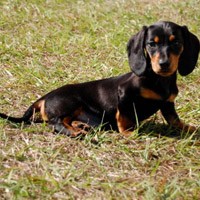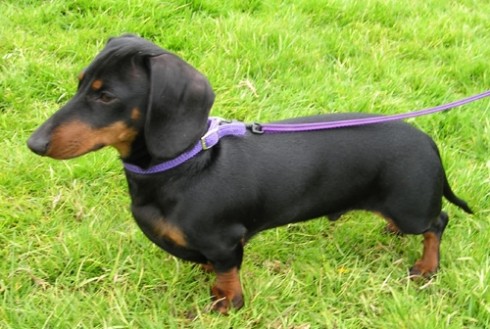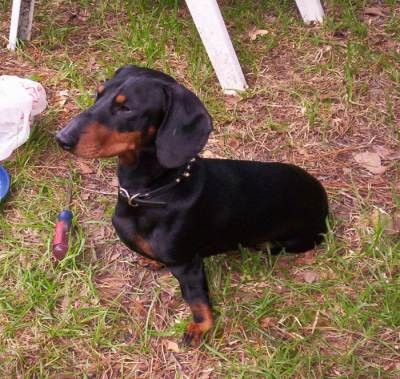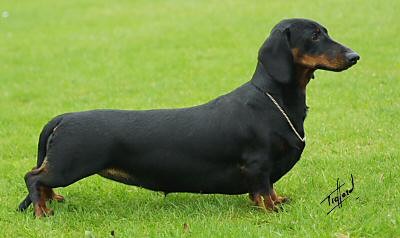Main Index
In Store
Our Web Store
Miniature Schnauzer Picture Gallery
Latest Dog Blogs
- What Are The Basic Commands To Train A Dog?
- PaySafe As The Most Popular Type Of Deposit
- Everything You Need To Know About Pet Sales
- Dogs Contribute To Our Physical And Mental Well Being
- How To Choose Where To Bet On Greyhounds In 2022
- Volunteer With Animals - How To Help Dogs Around The World
- Basic Understanding Of The House Edge
- Why You Should Get A Dog
- Top 20 Popular Dog Names Around The World
- Constipation in Dogs and How to Find Solutions
Smooth Haired Dachshund
Smooth Haired Dachshund Picture Gallery
Smooth Haired Dachshund Breeders
Smooth Haired Dachshund Clubs/Associations
The Full Smooth Haired Dachshund Description
The Dachshund had a lively, upbeat personality--spunky, curious and friendly. These traits remain from the Dachshund's original job: "Dachshund" means "badger dog" in German, and he was created to hunt down badgers.
Did you know?
The Dachshund was developed in Germany more than 300 years ago to hunt badgers.
So you want to own a Dachshund?
Dachshunds require minimal routine brushing to keep their coats healthy and in good condition. The longhaired and wirehaired Dachshunds may require extra grooming or help from a professional.
The Dachshund is naturally free from "doggy" odour.
The Dachshund makes a good companion whether you live in a small city apartment or the country. Dachshunds are loyal.
Dachshunds are generally easy to train for the show ring, and many of them really enjoy showing.
Indicative Breed Standard
General Appearance
Long and low, but with compact, well muscled body, bold, defiant carriage of head and intelligent expression.
Characteristics
Intelligent, lively, courageous to the point of rashness, obedient. Especially suited to going to ground because of low build, very strong forequarters and forelegs. Long, strong jaw, and immense power of bite and hold. Excellent nose, persevering hunter and tracker.
Temperament
Faithful, versatile and good tempered.
Head and Skull
Long, appearing conical when seen from above; from side tapering uniformly to tip of nose. Skull only slightly arched. Neither too broad nor too narrow, sloping gradually without prominent stop into slightly arched muzzle. Length from tip of nose to eyes equal to length from eyes to occiput. In Wire haired, particularly, ridges over eyes strongly prominent, giving appearance of slightly broader skull. Lips well stretched, neatly covering lower jaw. Strong jaw bones not too square or snipy, but opening wide.
Eyes
Medium size, almond-shaped, set obliquely. Dark except in chocolates, where they can be lighter. In dapples one or both ‘wall’ eyes permissible.
Ears
Set high, and not too far forward. Broad, of moderate length, and well rounded (not pointed or folded). Forward edge touching cheek. Mobile, and when at attention back of ear directed forward and outward.
Mouth
Teeth strongly developed, powerful canine teeth fitting closely. Jaws strong, with a perfect, regular and complete scissor bite, i.e. upper teeth closely overlapping lower teeth and set square to the jaws. Complete dentition important.
Neck
Long, muscular, clean with no dewlap, slightly arched, running in graceful lines into shoulders, carried proudly forward.
Forequarters
Shoulder blades long, broad, and placed firmly and obliquely (45 degrees to the horizontal) upon very robust rib cage. Upper arm the same length as shoulder blade, set at 90 degrees to it, very strong, and covered with hard, supple muscles. Upper arm lies close to ribs, but able to move freely. Forearm short and strong in bone, inclining slightly inwards; when seen in profile moderately straight, must not bend forward or knuckle over, which indicates unsoundness. Correctly placed foreleg should cover the lowest point of the keel.
Body
Long and full muscled. Back level, with sloping shoulders, lying in straightest possible line between withers and slightly arched loin. Loin short and strong. Breast bone strong, and so prominent that a depression appears on either side of it in front. When viewed from front, thorax full and oval; when viewed from side or above, full volumed, so allowing by its ample capacity complete development of heart and lungs. Well ribbed up, underline gradually merging into line of abdomen. Body sufficiently clear of ground to allow free movement.
Hindquarters
Rump full, broad and strong, pliant muscles. Croup long, full, robustly muscled, only slightly sloping towards tail. Pelvis strong, set obliquely and not too short. Upper thigh set at right angles to pelvis, strong and of good length. Lower thigh short, set at right angles to upper thigh and well muscled. Legs when seen behind set well apart, straight, and parallel. Hind dewclaws undesirable.
Feet
Front feet full, broad, deep, close knit, straight or very slightly turned out. Hindfeet smaller and narrower. Toes close together, with a decided arch to each toe, strong regularly placed nails, thick and firm pads. Dog must stand true, i.e. equally on all parts of the foot.
Tail
Continues line of spine, but slightly curved, without kinks or twists, not carried too high, or touching ground when at rest.
Gait/Movement
Should be free and flowing. Stride should be long, with the drive coming from the hindquarters when viewed from the side. Viewed from in front or behind, the legs and feet should move parallel to each other with the distance apart being the width of the shoulder and hip joints respectively.
Coat
Smooth-Haired: Dense, short and smooth. Hair on underside of tail coarse in texture. Skin loose and supple, but fitting closely all over without dewlap and little or no wrinkle.
Long-Haired: Soft and straight, or only slightly waved; longest under neck, on underparts of body, and behind legs, where it forms abundant feathering, on tail where it forms a flag. Outside of ears well feathered. Coat flat, and not obscuring outline. Too much hair on feet undesirable.
About Our Article Directory
- Article
- 27 November 2010
- 2 comments
Canis lupus familiaris
- Breed Article
- 29 May 2010
- No comments
Quick Search
Donate
Latest Dog Pods
- Tips on How to Stop Your Dog from Biting
- Beware - Not All Advertised Dog Rescues Really Are! How Can You Know The Truth?
- Helpful Tips For Dog Obedience Problems
- How to Keep Dogs From Eating Poop
- Dog Grooming Tips - A General Overview of the Very Basics of Dog Grooming
- Recognising Different Types of Dog Obedience Problems
- 5 Important Tips On Feeding A Puppy


